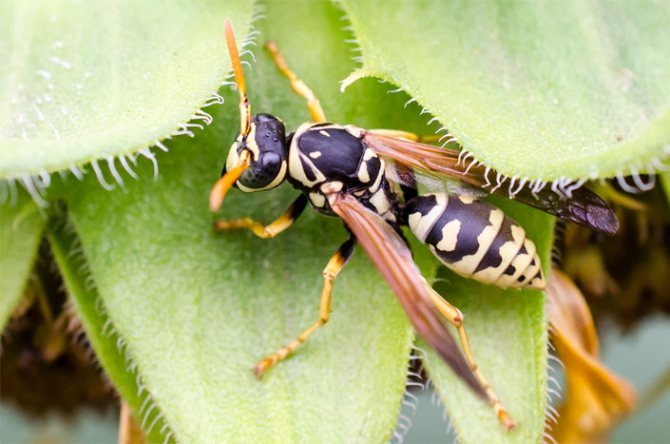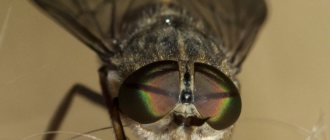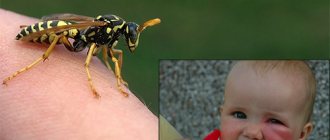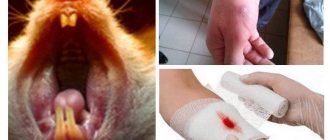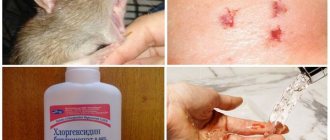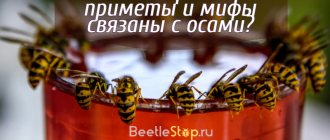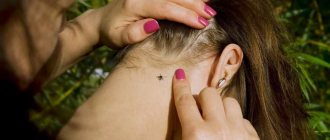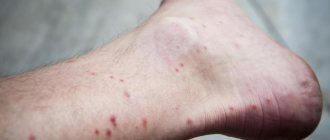What are the dangers of insect bites to cats?
For young and inexperienced cats, wasps and other large insects are of great interest as objects for play. Animals are very mobile and will be happy to catch up with the insect, trying to catch it with their paws. Not surprisingly, such fun often leads to bites.
If the cat has been bitten by an insect, you need to pay attention to which part of the body the injury happened. The safest place is a bite in the paw or back of the body. As a rule, a healthy animal is able to cope with the problem on its own, and the owner's help is not required here. Even if there is swelling on the paw that interferes with walking, you should not bother the cat, everything will go away within 2-3 days.
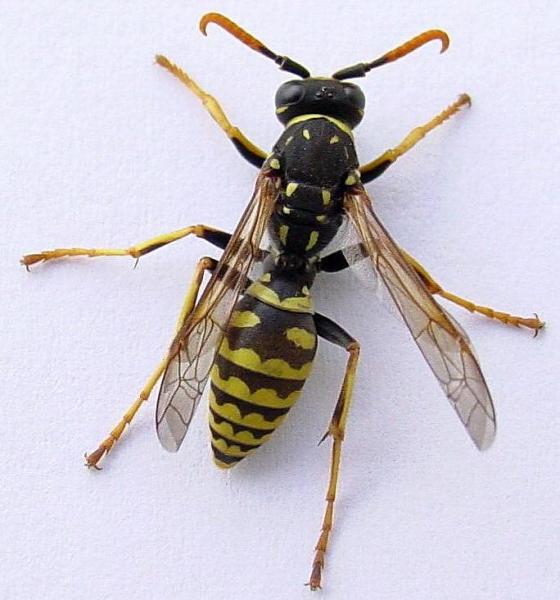
Wasp
More dangerous are situations when the bite hit the head and throat of the animal. If the venom enters the bloodstream near the cat's face, nose, or mouth, it can cause widespread swelling, involving the airway, and as a result, suffocation.
Special attention should be paid to eye bites. Such damage is fraught with serious complications and can cause the development of inflammatory processes and suppuration.
Stinging insects pose a serious danger to animals with allergies. If a cat has an increased sensitivity to insect poison, the probability of death after a bite is quite high. 2-3 bites can cause severe intoxication in the animal's body and, as a result, death.
Seeing a veterinarian
A wasp can bite a cat not only in nature or in the country, but also in a city apartment. If the swelling is small and the pet behaves as usual, then it is not necessary to immediately go to the doctor, you can watch the animal. Most likely, the body will cope with the poison on its own. Contacting a specialist is necessary in the following cases:
- If the bite was made in the head or throat area. In such a situation, there is a risk of edema that affects the airways, making it difficult for the animal to breathe.
- Damage to the area of the nose or eyes is dangerous with the appearance of inflammation or suppuration.
- A kitten, even from a small portion of wasp poison, can die in just a few hours, as the body becomes intoxicated.
- If you know that your cat has a high sensitivity or allergy to wasp venom, you should see a doctor urgently.


It is very important to observe the animal for at least a few hours after the bite, since complications may not appear immediately.
Interesting links
Find out what can help if a wasp has bitten a person in the article Remedies for a wasp sting at home by the link.
Symptoms of insect bites
If the cat is bitten by a wasp, the symptoms of the lesion are similar to those in humans. With bites, the following is noted:
- the animal has a sharp severe pain that turns into itching;
- swelling or swelling appears at the site of injury.
If the puffiness does not affect the vital organs, the owner does not need to worry, as in most cases everything will go away on its own. If the tumor spreads to the respiratory tract or urinary tract area, the animal must be shown to the veterinarian.
In the case of a cat bite, which are highly sensitive to the venom of stinging insects, the main symptoms are accompanied by vomiting, chills, shortness of breath, and impaired coordination of movements.
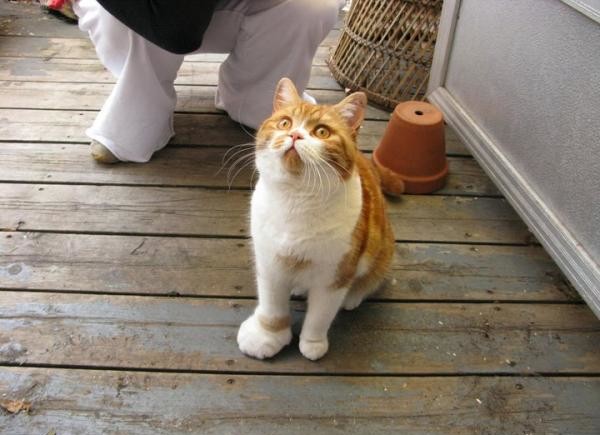

The paw is swollen
In especially severe cases, anaphylactic shock may occur, the outcome of which will be the death of the animal.
You can't hesitate here: as soon as the owner noticed the first signs of allergy, the animal must be taken to the clinic.
First aid
Treatment of the bite site
When a bite is found, the first step is to make sure that the sting is not stuck in the skin. If it is removed quickly, it will reduce the inflammation and the resulting dose of poison.
- The pet must be firmly fixed, since any manipulations in the area of edema will be painful.
- It is impossible to get the sting with your fingers; tweezers are used for this.
- The bite can be wiped with a baking soda solution or treated with hydrogen peroxide.
Medication assistance
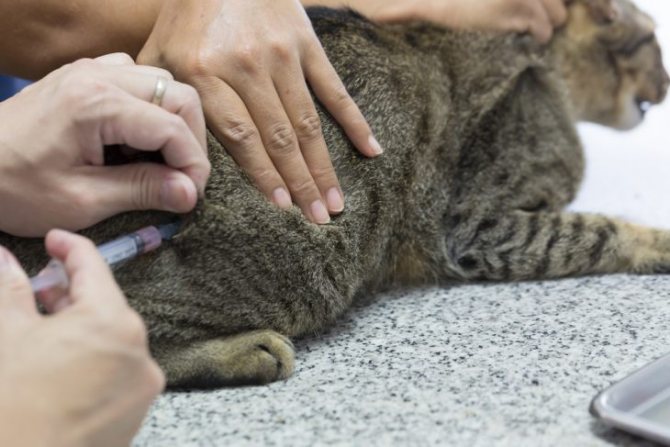

Bee stings can be very painful, and depending on the location, they cause a lot of inconvenience to the animal:
- If the cat is stung in the paw, severe lameness persists for several days.
- Bites in the nose and mouth interfere with normal eating.
In such cases, it is advisable to use corticosteroids. Usually, hormonal anti-inflammatory drugs are prescribed by a doctor, but experienced owners themselves sometimes resort to such therapy.
For cats, Prednisolone is most often used at a dose of 0.5-1 mg / kg, less often Dexamethasone. Prednisolone can be given either in pill form or by intramuscular injection:
- For a cat weighing 3-4 kg, half a 5 mg tablet will be sufficient. If the pet is behaving aggressively, or there is profuse salivation, the pill will not be easy to give.
- The injection is also preferable because the drug begins to act faster.
Therefore, it is recommended to keep an ampoule of Prednisolone and insulin syringes in the "summer" veterinary medicine cabinet. If a wasp sting has caused severe swelling and pain, it is necessary to inject the drug into the thigh muscles at a dose of 0.1 ml / kg. Prednisolone is repeated every 12 hours, reducing the dose for 3-5 days until the drugs are completely discontinued.
Contacting the clinic
In the vast majority of cases, an insect bite is not a reason to visit a veterinarian. However, in some cases, hospitalization is necessary:
- Signs of Quincke's edema, systemic allergic reaction.
- Multiple bites that can cause poisoning.
- Age up to 5-6 months (kittens are more sensitive to poison).
Adult cats tolerate bee or wasp stings without consequences. However, if the immune system of a pet (usually a purebred) is out of order, bee venom can cause anaphylactic shock and death.
After discovering the bite, you need to watch your pet for some time - if your appetite has disappeared, if there are signs of lethargy, apathy. In furry cats, the submandibular space should be checked especially carefully for swelling in the neck area.
What not to do:
- use local irritants based on menthol and essential oils or ointments intended for people (Fenistil);
- give the cat antihistamines (Suprastin, Tavegil, Zyrtec), as they will not be effective.
First aid to an animal with a bite
If there is no threat to the life of a pet, it is not necessary to see a doctor. In the case when the animal suffers from pain or itching, asks for help or tries to comb the bite site, you can apply a number of simple measures that will alleviate the condition of the furry friend:
- prepare a mixture of 9% vinegar and water in a 1: 1 ratio and wipe the bite with it;
- dissolve a bar of soap in water and rinse the bite;
- place a piece of ice or frozen meat in a plastic food bag and attach to the tumor.
Such an ice pack will stop the spread of poison, reduce itching and swelling.To relieve pain, ammonia is also often used: you should soak a piece of cotton wool in it and wipe the bite site.


Sting removal
But what if the cat shows signs of allergies, but there is no opportunity to visit the veterinarian immediately? First of all, you need to contact a specialist at least by phone. Your doctor will recommend medications to relieve the allergic reaction. Most often in such cases, antihistamines are prescribed:
- Dexamethasone;
- Prednisolone;
- Diazolin;
- Benadryl;
- Suprastin.
The doctor will also indicate the dosage and route of administration of the drug. In order for the animal in anaphylactic shock to not die on the way to the veterinarian, you can give him 2 or 3 tablets of the homeopathic drug Apis.
Drugs that can be used to relieve symptoms and combat allergies
As mentioned above, the first thing the owner needs to do if the cat or cat has the initial signs of general intoxication and allergies is to take the animal to the veterinary hospital without hesitation. Medicines to eliminate the symptoms and alleviate the pet's condition before visiting the clinic are allowed to be used only after consulting a doctor, at least by phone - otherwise the cat can be seriously harmed.
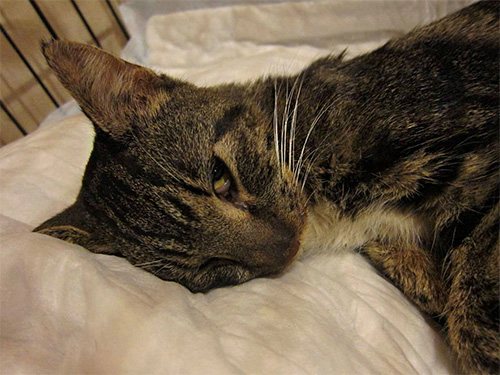

As a rule, veterinarians most often advise in such cases:
- Prednisolone, which inhibits the development of an allergic reaction, is in the form of an intramuscular injection (dosage - 0.5 ml), or half a tablet.
- Dexamethasone - 0.2 ml injection.
- Benadryl is a fairly versatile remedy suitable even for teenage kittens.
- Diazolin - half a tablet at a time.
- Less commonly, Suprastin, since this drug is less versatile and in itself is capable of causing an immune response in some cats and cats.
It will not be superfluous to emphasize once again that you should not use these funds on your own, without consulting a veterinarian, since if used improperly, they can suppress the animal's immunity and lead to the addition of a secondary viral, fungal or bacterial infection.
Those who have repeatedly turned to the veterinarian after a cat or cat has been bitten by a wasp know that adrenaline can be injected into the animal in the clinic, but it is forbidden to do this on their own - the risk of harming the pet even more is too great.
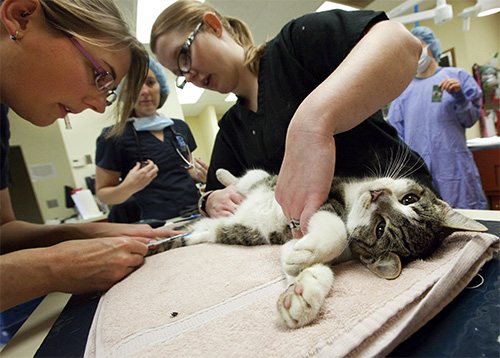

On a note
The most prone to allergies are cats of long-haired breeds: Persians, British, Angora. In addition, their bite is not immediately noticeable.
If a cat or a cat has been stung by a wasp, and the insect venom has begun to provoke the development of allergies, one of its symptoms may be an increase in the animal's body temperature. In this case, you also should not knock down the temperature with drugs on your own - with its critical values, only the veterinarian must decide on stopping this symptom (however, it is quite possible to use a cool wet towel).
It is also useful to read: What to do if a child is suddenly bitten by a wasp
Folk recipes for helping an animal with insect bites
You can relieve irritation and other symptoms of a bite with the help of folk recipes. Essential oils of thyme or lavender have a good effect. Mix 3 drops of any oil with 1 teaspoon of apple cider vinegar and rub gently into the damaged area. In the absence of oil, you can use only vinegar.


Thyme and lavender essential oils
Oatmeal baths can help eliminate the itching and soreness of multiple bites. To prepare them, 1 cup of oatmeal should be poured into a piece of cloth or gauze bag, tied with a string and lowered into a basin with cool water. The affected animal should then be placed there and held for 20 minutes. The procedure can be repeated daily until the swelling and itching have subsided.
To relieve swelling immediately after a bite, products containing a large amount of natural acids are used, it can be oranges, apples, lemon or lime.
You can also use citric acid. A piece of fruit or a swab dipped in a solution of citric acid is applied to the damaged area. Turmeric, which is sprinkled on the bite site, has a calming and anti-inflammatory effect.


Lemon acid
Treatment
If the reaction to the bite is minor, the veterinarian will send the patient home after reassuring the owners. And the doctor will act in a completely different way when faced with the manifestations of anaphylactic shock. This reaction occurs suddenly, shortly after the bite. A cat can die within an hour if not given help.
Signs of anaphylaxis:
- weakness, unnatural behavior: the animal is lethargic or overly agitated;
- vomiting;
- mucous membranes are pale or bluish;
- breathing is difficult, wheezing is heard;
- the pulse quickens, becomes weak;
- convulsions, involuntary urination.
The veterinarian will restore airway patency. Usually, this does not require a tracheotomy, it is enough to install an endotracheal tube. Humidified oxygen is fed through it.
- They urgently give 0.1% adrenaline (Epinephrine), while some specialists prefer to inject it into the area of the bite, diluting it with saline beforehand.
- Epinephrine can be injected again in a different place every 15 minutes until the attack is stopped.
- If necessary, it is administered intravenously, very slowly, at a dose of up to 0.01 ml / kg.
An intravenous catheter is installed, into which Prednisolone 4-10 mg / kg is injected. To eliminate spasm of the respiratory tract, 2.4% Euphyllin 5-7 mg / kg is used.
To restore normal blood circulation, pressure and renal blood flow, colloidal and crystalloid solutions (dropper) are used.
Even if the attack was effectively and promptly eliminated, the cat is left in the hospital under supervision for at least a day. It is important to control adequate urination and begin treatment of acute renal failure, which may occur against a background of shock pressure drop, hypoxia and intoxication.
Normal and allergic reaction to the bite
In case of penetration of the sting into the skin area of the animal, the poison spreads, unfavorably affecting the blood system.
The dog begins to feel acute pain at the site of the lesion, and then a response appears. You can determine the bite based on the following symptoms:
- increased salivation;
- increased anxiety due to an unexpected bite;
- irritation and swelling of the affected area;
- when bitten into the mucous membrane, the animal refuses food;
- severe fatigue;
- a blood point appears in the central part of the wound;
- severe itching.


If after contact of the dog with the wasp, an allergic reaction does not appear, then the pain and discomfort disappear within a day. The next day, the pet may experience constant itching, so you should be careful, as infection is possible.
In order to avoid undesirable consequences, it is better to treat the wound with an antiseptic and repeat the procedure for several days. It should take at least a week for the dog to fully recover.
The effect of an allergic reaction after a bite does not appear in every case. Veterinarians assure that the primary wasp sting cannot cause an allergic reaction, however, repeated or repeated damage to the body increases the likelihood of its manifestation. Basically, the allergic effect occurs as a result of a bite in the mouth, tongue, neck or nose. In case of damage to an animal anywhere in the facial area, you should immediately contact a veterinarian and use an antihistamine.
An allergic reaction can manifest itself in several ways: external and systematic, and it is worth expecting its appearance within half an hour.Often, with allergies, severe swelling of 10-15 mm is formed, itching and hives also appear. The systemic manifestation of the reaction carries very serious problems, the dog can change in mood and show aggression. Here is a list of symptoms that can be used to determine an allergic reaction:
- the animal has difficulty breathing, at times the condition worsens;
- the supply of oxygen to the body decreases, this is evidenced by the purple color of the tongue;
- severe edema and swelling form in the affected area;
- the appeared urticaria can move around the body, regardless of the site of the bite;
- increased salivation, active functioning of the lacrimal gland;
- sudden loss of appetite, vomiting and diarrhea;
- manifestation of aggressiveness, variable apathy and anxiety, deteriorating sleep quality;
- manifestation of problems with coordination, loss of consciousness.
Attention! The most serious symptom of an allergic reaction is anaphylactic shock. In this case, foam comes out of the oral cavity, uncontrolled vomiting appears. In the worst case, the dog can lose consciousness. Under these circumstances, it is recommended that the animal be brought to the veterinary clinic immediately.
How to recognize a wasp sting?
If the dog is stung by an insect, it will whine and often lick the affected body part. Itching and soreness will bother the dog for several days. It is possible to distinguish a wasp sting from a bee sting by the absence of a sting in the blister, as well as by the number of wounds. Unlike a bee, the same wasp can sting multiple times. If the pet is bitten on the paw, it will squeeze it in pain and move on 3 limbs.
If the animal is allergic to bee, wasp or bumblebee stings, the affected area becomes swollen and red, and the entire body may become covered with a rash. The development of an extensive allergic reaction can manifest itself as shortness of breath due to laryngeal edema. The tongue and mucous membranes of the mouth will acquire a purple hue, foam will come out of the mouth, vomiting and fainting are possible.
If a dog is bitten by a wasp on the lip, neck, nose or tongue, the risk of laryngeal edema increases. This dangerous condition can lead to the death of the animal in the shortest possible time. If a dog has stirred up a hornet's nest and has multiple blisters on its body and face, the risk of anaphylactic reaction also increases.
It is necessary to monitor the well-being of the dog throughout the day when it is stung, since the allergy may not appear immediately. The factors influencing the speed of its development are:
- the amount of poison that entered the tissue at the time of the bite;
- features of the animal's body;
- the place where the insect stung.
The most dangerous bite sites are the muzzle, mouth and neck. If a pet accidentally swallows an insect, it can sting in the larynx. And this, even in the absence of an allergic reaction, can lead to suffocation. Most often, of course, the dog's muzzle swells and the eyes become numb.
Why does the cat bite?
At first glance, both a domestic and an outdoor cat can bite for no apparent reason. But, despite the fact that the reasons may be incomprehensible, they always exist.
So, for example, an animal bites when trying to take food from him or even make a hint of it (reach out to the side of food). Moreover, quite often a cat rushes to bite even when a person just passes by her during a meal. Animals perceive this as an attempt to "guess the time" for stealing food.
The animal also bites when a person strokes his children. The reason is quite simple: the cat is trying to protect its offspring.


Often, aggression in cats is caused by the protection of their offspring.
Cats can also bite when playing, but usually do not hurt. Serious bites during games occur only if games are imposed on them against their will. Children often sin with this, pulling the animal by the paws or throwing toys at it.
In case of rabies, the cat bites, regardless of mood and prerequisites. Due to the defeat of the nervous system, she develops unmotivated aggression, therefore, animals with rabies attack even those people who pass far from them.
Wasp bite symptoms
Depending on the localization of the accumulation of poison, the symptoms may vary and be more or less pronounced.
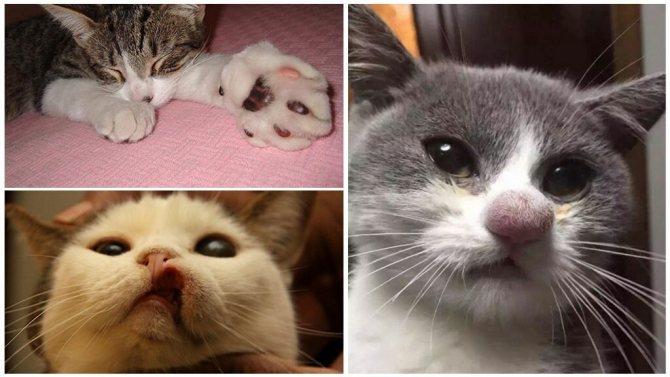

In most cases, the following symptoms are observed:
- the appearance of hives and itching in the area of the sting;
- chills and tremors in the body;
- loss of orientation in space;
- nausea, vomiting, diarrhea;
- profuse salivation;
- dyspnea;
- convulsions (rarely occurring);
- heart palpitations;
- swelling;
- increased body temperature.
If the bite hits the tongue or cheeks from the inside, there may be no obvious swelling.
Prevention of attacks
When walking with your animal, you need to monitor its safety. To do this, you must not let your pet near dense bushes with flowering plants and berries. It is in such places that wasps are most often found. Particular attention should be paid to active breeds, as these dogs show more interest in the environment.
Advice! It is best to check the walking area for insects. Observing these rules, the owner of the animal will be able to protect his pet from a sudden attack.
Observing safety rules and having a veterinary first-aid kit with you, you can protect your pet from unforeseen situations. It is worth being vigilant and closely watching the animal that is in the territory of flowering plants.

